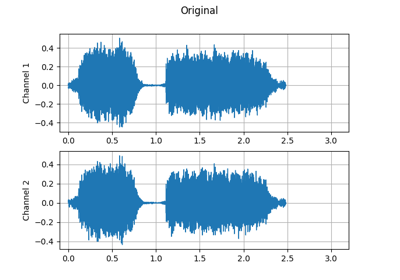torchaudio.functional.add_noise
- torchaudio.functional.add_noise(waveform: Tensor, noise: Tensor, snr: Tensor, lengths: Optional[Tensor] = None) Tensor[source]
Scales and adds noise to waveform per signal-to-noise ratio.
Specifically, for each pair of waveform vector and noise vector , the function computes output as
where
with being the desired signal-to-noise ratio between and , in dB.
Note that this function broadcasts singleton leading dimensions in its inputs in a manner that is consistent with the above formulae and PyTorch’s broadcasting semantics.
- Parameters:
waveform (torch.Tensor) – Input waveform, with shape (…, L).
noise (torch.Tensor) – Noise, with shape (…, L) (same shape as
waveform).snr (torch.Tensor) – Signal-to-noise ratios in dB, with shape (…,).
lengths (torch.Tensor or None, optional) – Valid lengths of signals in
waveformandnoise, with shape (…,) (leading dimensions must match those ofwaveform). IfNone, all elements inwaveformandnoiseare treated as valid. (Default:None)
- Returns:
Result of scaling and adding
noisetowaveform, with shape (…, L) (same shape aswaveform).- Return type:
- Tutorials using
add_noise:

